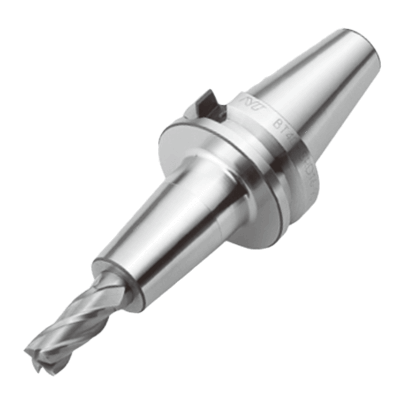What Is a Toolholder?

A toolholder is a connecting device, called tooling, used to connect a tool to the machine tool spindle.
Toolholders can mount and hold tools used for cutting and other purposes.
Toolholders are used to hold cutting tools. In addition to single-type toolholders, there are also toolholders that are integrated with a shank, which are used to fix a toolholder to the spindle of a machine tool.
Uses of Toolholders
Toolholders are used as peripheral equipment for tooling and to hold tools used for cutting.
There are various methods of securing toolholders, including the following:
- Collet chucks are suitable for cutting that rotates at high speed and are used for general-purpose applications, such as drills and end mills.
- Hydraulic chucks are suitable for high-precision machining, and hardened-fit chucks are suitable for five-axis machining and high-speed machining.
- Milling chucks are suitable for heavy-duty machining and can be used in drilling and milling.
Principle of Toolholders
The following is an explanation of the principle of a toolholder by each type of clamping method.
In the fixing method called collet chuck, the toolholder is cut into the toolholder; the tool is passed through the toolholder, and then the tool is held by tightening the outer circumference from the outside, resulting in low runout and highly accurate mounting.
Hydraulic chucks are also known as hydro chucks.
As the name implies, it creates hydraulic pressure by applying high pressure to the oil inside the toolholder when tightening the tool. It is then deformed and secured using hydraulic pressure against the desired point.
In the case of a hard-fit chuck, the toolholder is heated to a high temperature, and the heat-induced expansion and contraction of the metal is used to tighten the tool with excellent rigidity and holding power.
Milling chucks use needle bearing forces to tighten the tool, which structurally increases the hold and rigidity of the tool.